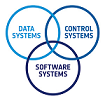Tuesday 16 November 2021
SAVOIR
Background
A significant effort is being deployed by Agencies and Industry to streamline the development, validation and operation phases of spacecraft, with particular focus on the Avionics. This effort is being coordinated by ESA in the form of the "Spacecraft Avionics Open Interface Architecture" (SAVOIR) initiative. SAVOIR brings together ESA and industry experts in an open forum and is gaining significant momentum. Based on establishment of reference architectures, it provides the ground for the identification of building blocks interacting through standardised interfaces, service access points and protocols across hardware and software boundaries.
Objective
The objective of this annual SAVOIR session is to update the avionics stakeholders with the progress done over the last year and to discuss the next steps.
Organisation
A programme has been defined during the SAVOIR Advisory Group (SAG) meetings held in 2021.
- Status of the working groups (Autocode, SAVOIR-FAIRE, FDIR WG handbook V2)
- SAVOIR activities (Electronic Data Sheet, Savoir boot SW update, RTEMS SMP qualification)
- Model based Avionics, Avionics Power Interface
- Technology planning (CD3 – Avionics - strategy, Harmonization Dossier, AOCS/GNC sensors actuators dossier, Perspective in Integrated Modular Avionics)
Wednesday 17 November 2021
Software Systems (am)
Artificial Intelligence for Space Software: applications, challenges, V&V
The Software session focuses this year on the application of AI techniques in critical embedded systems. The presentations will identify the challenges of the implementation on limited resources and the particular aspects of their verification, validation.
Common Session (pm)
Autonomous Avionics Systems
The Common session focuses this year on Autonomous Avionics Systems.
Thursday 18 November 2021
GNC, AOCS & Pointing (am)
Avionics Architectures for Vision Based Navigation
Vision-based navigation is an enabling technology for several mission applications, which is being rolled out on a growing number of ESA missions. Applications ranging from rendezvous & docking and close proximity operations, to planetary landing, reusable launchers, and small Solar system body missions rely on vision sensors for performing essential mission tasks. Processing information from these vision sensors and feeding it to the on-board navigation and control algorithms calls for advanced avionics solutions, in order to handle such large amount of data in real-time.
This session will address the challenges for the avionics subsystem development and describe some of the avionics architecture solutions for the navigation processing chain in the context of European missions under definition or implementation.
Data Handling (pm)
Consolidated and emerging OBC and Data Handling system and Impact of AI in space HW
The Data Handling session explores new and emerging OBC & Data handling System that will provide the resources to cope with the challenges of increased autonomy/AI algorithms

